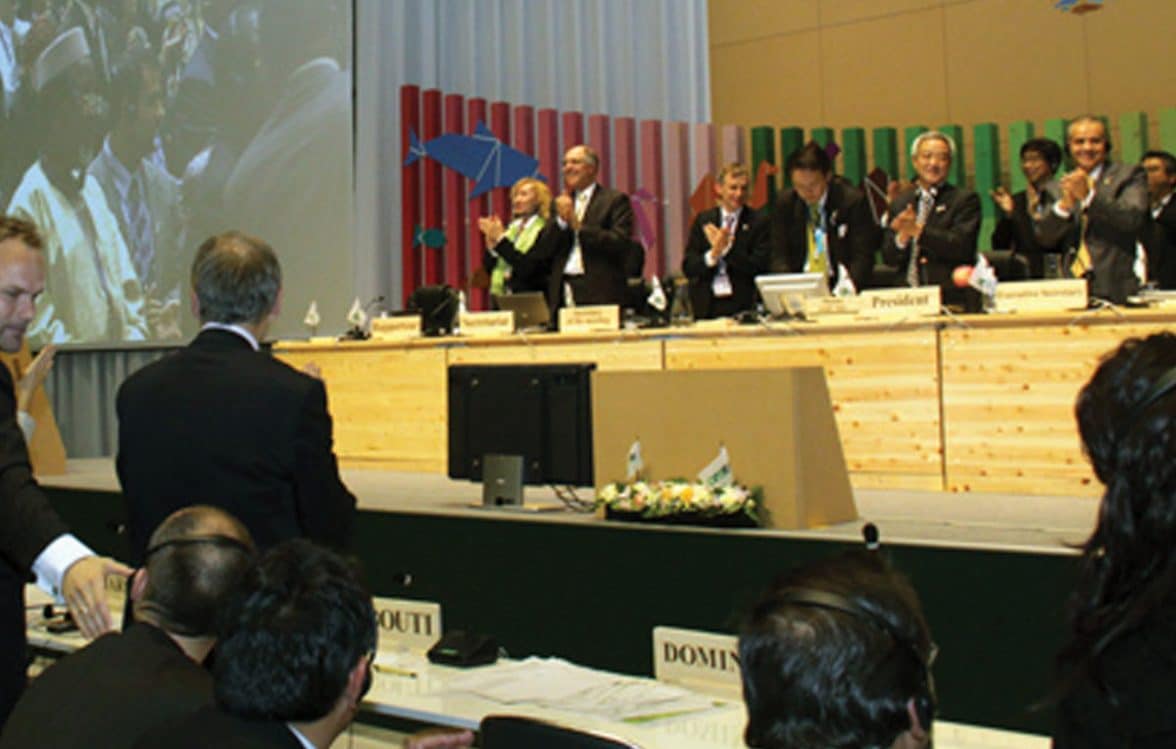As seed companies are urged to keep track of their genetic resources, European Seed offers an overview of the Nagoya Protocol and what it means to the industry.
Editor’s Note: This is part two of a two-part series exploring the Nagoya Protocol and its impact on the European seed industry. The first part can be found online in Volume 2, Issue 1 of European Seed at european-seed.com.
In this part two of the mini-series on the Nagoya Protocol (NP), we take a closer look at the European implementation of the NP. European Seed sat down with Szonja Csörgõ, director intellectual property and legal affairs of the European Seed Association (ESA).
European Seed: The 64 species covered by the the International Treaty on Plant Genetic Resources for Food and Agriculture (ITPGRFA) are not covered by the Nagoya Protocol. So is it fair to say that only those companies breeding with species outside the Annex I are to be worried about the Nagoya Protocol?
Szonja Csörgõ: Indeed, Article 4(4) of the Nagoya Protocol states that “Where a specialised international access and benefit sharing (ABS) instrument applies that is consistent with, and does not run counter to the objectives of the Convention on Biodiversity (CBD) and this Protocol, this Protocol does not apply for the Party or Parties to the specialised instrument in respect of the specific genetic resource covered by and for the purpose of the specialized instrument.”
This is of course a very lengthy and legalistic sentence, but it is worth having a closer look at it and spending some time to interpret its different elements to better understand what is exactly excluded from the scope of the Nagoya Protocol and what is not. First, the above provision of the Nagoya Protocol does not refer to the ITPGRFA specifically but to “specialised international access and, benefit-sharing instruments”, and thinking about the structure of the ITPGRFA it has to be acknowledged that it is not the treaty itself but “only” its multilateral system (MLS) that constitutes a specialised international ABS instrument. The scope of the treaty covers all PGRFA whereas the scope of the MLS is limited to the species listed on Annex I. These are excluded from the EU legislation as long as they are utilized for food and agriculture and come from a country that is party to the ITPGRFA. It is not completely clear yet whether genetic resources that are not placed in the multilateral system and/or are available in situ in countries that are Contracting Parties of the ITPGRFA fall within or outside the scope of the EU legislation. According to the provisions of the treaty genetic resources belonging to species on Annex I do not become automatically part of the MLS, but have to be placed in there by the Contracting Parties. So far, only a bit more than 30 Contracting Parties have notified their collections to the MLS from the more than 130.
Therefore the following questions may be useful to ask in a “check-list”1:
• Does the genetic resource belong to an Annex I crop?
• Was it accessed in a country that is Party to the ITPGRFA?
• Has that Party placed the specific genetic resource in the MLS of the treaty?
• Is it coming from an ex situ collection?
• Is the purpose of the use research, breeding or training for food and agriculture?
ES: Several companies have decided to challenge the EU Regulation implementing the Nagoya Protocol in front of the General Court of the EU. Why are they doing this? What is wrong with this EU Regulation? Should other companies join?
SZ: In general terms it has to be mentioned that the EU Regulation 511/2014 is a disproportionally intrusive measure in terms of the compliance burden it imposes on users of genetic resources, and very vague and imprecise in many of its provisions. Consequently, it creates significant legal uncertainty for users who have to comply with the due diligence and related obligations and their consequences. It is not a plant breeding-specific view on the regulation, but a cross-sectorial assessment that the amount of legal uncertainty created by the regulation is huge, but it does affect plant breeders in an entirely distinct and burdensome fashion. Apart from these shortcomings, one of the main reasons for the plant breeding companies to challenge the validity of the regulation lies in the disproportionate nature of the obligations it imposes on the plant breeding sector, since genetic resources are not merely an ancillary part of their business, and more specifically in the conflict it creates with the long-lasting tradition of breeders to rely on the breeders’ exemption.
The main obligation for users under the EU regulation is the so-called due diligence obligation according to which users have to seek, keep and transfer to subsequent users all the information on the genetic resources that are specified in the regulation (Article 4.2). Since Article 2 of the regulation states that it applies to genetic resources in respect of which Parties (to the Nagoya Protocol) exercise sovereign rights, whether the due diligence obligation has to be carried out in respect of commercial plant varieties accessed under the breeders’ exemption remains a matter dependent on how the country of access defines its own sovereignty over genetic resources. If a breeder accessing a commercial variety under the breeders’ exemption has to seek all the information foreseen in the regulation regarding the genetic resources incorporated in the commercial variety, the breeders’ exemption will become totally meaningless and the administrative burden on the plant breeders will be unbearable. Not to mention the fact that the regulation basically requires the plant breeding sector, who heavily rely on the breeders’ exemption, to completely change the way it has been working for centuries.
ES: Can you explain why ESA decided not to support the court case? Could this change in the future and if yes, what needs to happen for that?
SZ: ESA has, in fact, always supported the case as far as the arguments and reasoning behind it are concerned. During the whole legislative process ESA has been explaining to the legislators the problems described above and has been pleading for them to take into account the distinct features of commercial plant varieties. In fact, an amendment was proposed to consider the due diligence obligation as fulfilled in case commercial plant varieties are accessed and utilized in breeding. However, as a trade association ESA could not do more since under EU procedural law there are very strict conditions as to whether an applicant is directly and individually concerned by a measure in order to file a request for annulment.
Once the two distinct actions had been filed by the individual companies, ESA without hesitation decided to intervene in the case on their behalf and support their pleas. ESA filed an application for leave to intervene to the General Court of the EU in mid-December, and now the General Court will have to decide whether or not to permit the association to file a statement in intervention on behalf of the applicants.
ES: How could this happen at intergovernmental level that there are two sets of international regulations regulating with a large degree of overlap the same matter? Is there a chance to ‘untangle’ the two – e.g. define which genetic resources each of the systems regulate? Or is there a chance to ‘assign’ all plant genetic resources for breeding into the ITPGRFA and all other genetic resources into the Nagoya Protocol?
SZ: Since the CBD and the Nagoya Protocol cover and set rules for all genetic resources, in theory indeed there is an overlap between the two international instruments. However, as explained above, Article 4(4) of the Nagoya Protocol intends to ‘untangle’ this overlap by codifying the general principle of law according to which a specific regime prevails over the general regime. Therefore, in legal terms there is no real overlap but in practice, as explained above, due to the many elements which define the actual scope of the treaty’s MLS, it is not so easy and evident to define which genetic resources are covered by which regime.
Certainly, the best solution to clarify the situation would be to ‘assign’ all PGRFA into the MLS, or in other terms, to expand the coverage of Annex I of the treaty to all species used in plant breeding. This is also the position the seed industry represents in the current treaty discussions regarding the enhancement of the MLS. In practice, however, expanding the scope of Annex I is not without hurdles since it is part of the treaty and it appears that any modifications to it require unanimity of the more than 130 Contracting Parties of the treaty. It is currently under investigation what other ways could be found to expand the scope of the MLS in practice. One of such ways is already applied by a number of countries in Europe whereby the country decides, in its own competence, to apply the sMTA also to species that are not listed in Annex I.
ES: Is the seed industry in frequent contact with the CBD/NP as it is with the IT? When is the next meeting of the NP and what are the main topics that the seed industry wishes to influence?
SZ: The seed industry has been following the negotiations leading up to the Nagoya Protocol as well as the discussions that took place between its adoption and its recent entry into force. Involvement of the seed industry in those discussions is ensured both on a sectorial level as well as in a cross-industry manner, via the International Chamber of Commerce (ICC). The first meeting of the parties to the Nagoya Protocol took place in October 2014 and the second meeting is scheduled for December 2016. The main topics the seed industry is carefully following are the developments regarding the ABS Clearing House Mechanism; the Global Multilateral Benefit-Sharing Mechanism and the issue of an internationally recognised certificate of compliance. As to the ABS Clearing House, the industry considers this as one of the core basic elements of the system and attaches a lot of attention to the fact that it has to be implemented in a way that users may rely on it as THE source of information for their compliance. If the clearing house is not able to meet these goals, compliance with the system will become nearly impossible. Article 10 of the Nagoya Protocol provides that in the course of implementation of the Nagoya Protocol, parties have to consider the need for and modalities of a Global Multilateral Benefit-Sharing Mechanism. Since the industry is of the view that there is no need for such a mechanism it is carefully following developments in this regard. Lastly, a very important point for the industry is still to get official confirmation from the CBD/NP that the sMTA of the treaty fulfills the criteria of an internationally recognised certificate of compliance and therefore can be recognised as such.
ES: What does the entry into force of the Nagoya Protocol mean for plant breeders and seed companies in general? What should they do to make sure that they are compliant with the Nagoya Protocol? What can or can they not do now that the Nagoya Protocol has entered into force?
SZ: In principle the fact that the Nagoya Protocol has entered into force does not change much in itself. It is more the entry into force of national ABS laws that matter since the scope of ABS measures and the obligations to follow in order to get access and be able to utilise genetic resources in a legally compliant way will depend on national ABS laws. The date of the entry into force of the protocol is, however, important to remember (October 12, 2014) since it determines the point in time from which compliance with the provisions of national ABS regimes can be checked (see also the case of the EU Regulation).
In general terms, companies should always check whether there are national ABS rules regulating access and utilisation of genetic resources in the country where they wish to access a genetic resource and the obligations applicable under those rules. Further on, companies carrying out activities which fall under the scope of the EU Regulation implementing the Nagoya Protocol should – as of October 12, 2014 – carefully document all genetic resources entering their premises which are used or may be used for R&D purposes.
1 Depending on the discussion on the details, it might be necessary to extend the list with some further questions.












